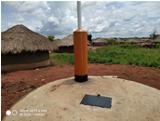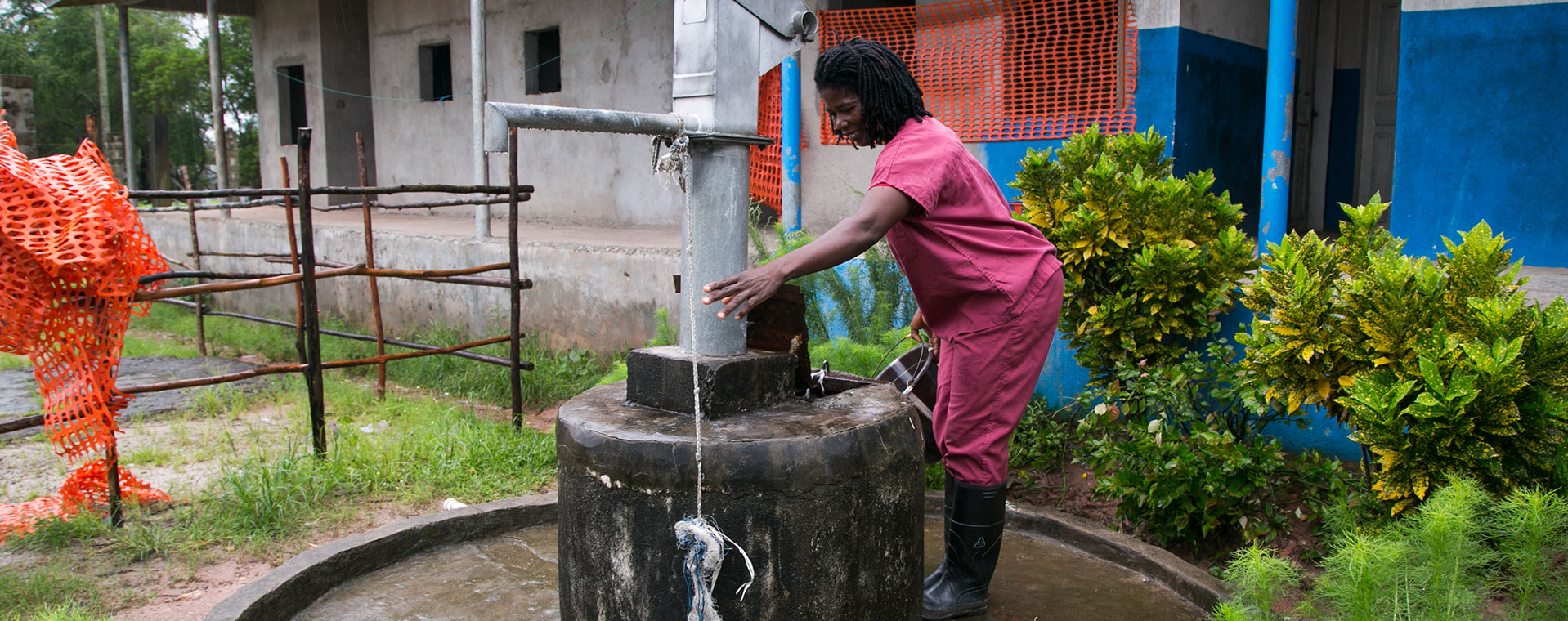
Uganda: Amref Health Africa improves WASH at healthcare facilities to reduce maternal and child mortality
STORIES |
Procurement and Distribution of essentials supplies for Health Facilities
To ensure that the health facilities are cleaned at all times, Amref procures sets of essential supplies comprising of disinfectants, detergents and sanitation equipment that are distributed to six health facilities. These supplies have helped in improving hygiene condition in these facilities, which attracted more communities to take up health care services and mothers to come for delivery services in addition to the other interventions of the project. Consequently, a total of 646 babies were delivered from across the six intervention health facilities in just one year, a total of 8022 (male 1833: Female 6189) clients accessed various health care services like ANC, Postnatal treatment, and malaria treatment for children and pregnant women. The percentage of skilled assisted deliveries in targeted health units increased from 20.8% at baseline to 30.6% at midterm review against the district average of 59.1%. Though this is still lower than the district average, the almost 10% average increase in the targeted health care facilities in the 3 years is evidence that improving sanitation and hygiene conditions in a health care facility increases the uptake of services.
[envira-gallery id=”5743″]
Renovation of maternity wards in accordance with required MoH standards
Amref, in collaboration with the District Health and Engineering department, renovated two maternity wards at Olwal and Labongogali HCIII. The purpose of the renovation is to create a safe and conducive environment in the maternity wards that are easy to clean. With a clean and safe environment for conducting deliveries, it is anticipated that infections among mothers and babies during delivery would reduce. This will help meet the main goal of the project, which is the reduction of maternal and infant mortalities related to sepsis. So far, midwives conducted 169 deliveries within the renovated health facilities from September-December 2019 alone compared to the 336 cumulative deliveries for the first 8 months of the year before renovations. More deliveries are anticipated in the 2 remaining years of the project. The renovations are meant to complement other efforts of the project, yet this new environment on its own makes health workers happier when delivering services and attracts the community to receive service.
Construction of post-delivery washrooms at health centres
Post-delivery washrooms are renovated and installed with running water within the maternity wards to provide a decent and clean room for mothers to bathe after delivery. All the 691 mothers who delivered from the 2 health facilities targeted in the last year were able to bathe from clean shower rooms, within convenience and make them comfortable in a safe and clean environment. This is a very big difference from the initial bathrooms that were located outside and were shared by animals like pigs making them both unsafe and unhygienic. The two health facilities, Labongogali and Olwal, are delivering more than 17 and 18 babies per month respectively. The project has set a target to intensify community sensitisation and mobilisation to have at least 25 deliveries per month in the remaining 2 years.
[envira-gallery id=”5748″]
Installation of solar system to motorize water from the borehole to the health facilities.
To ensure that there is running water in the health care facilities, Amref installed motorize solar water systems in health facilities. These draw water from existing boreholes. To avoid conflicting over water with the host communities and to enable that communities benefit from the solar-powered water system without interfering with the health facilities operations, some of the water is directed to the communities as public taps. This has ensured that communities continue to access water but also have better benefits in access to safe water as the system provided more than one water collection point (tap). This has reduced the waiting time for water at the water sources. The communities pay water user fees, which are saved for operation and maintenance for the solar-powered water system.
In 2019 alone, 567 people (176 Males and 391females) benefited from the water systems when they visited these health facilities, 1,200 people from the host communities have access to safe water through the provided tap stands.
[envira-gallery id=”5751″]
Construction of improved solid waste disposal systems (placenta pit)
Placenta pits are constructed to dispose of placentas safely to give mothers confidence the placentas cannot be carried around by dogs. In the case of Ladongogali HC III, there was an existing placenta pit but it was located over 100 meters away from the maternity ward and as such, when a health worker had more than one delivery to conduct in a row, the safe disposal of the placenta was never a priority. Consequently, these were always kept in the sluice rooms and rotted away when forgotten or sometimes were put just outside the maternity ward and attracted dogs that sometimes carried these away. With the new placenta pits near the maternity wards, safe disposal is done immediately after the delivery.
[envira-gallery id=”5755″]
